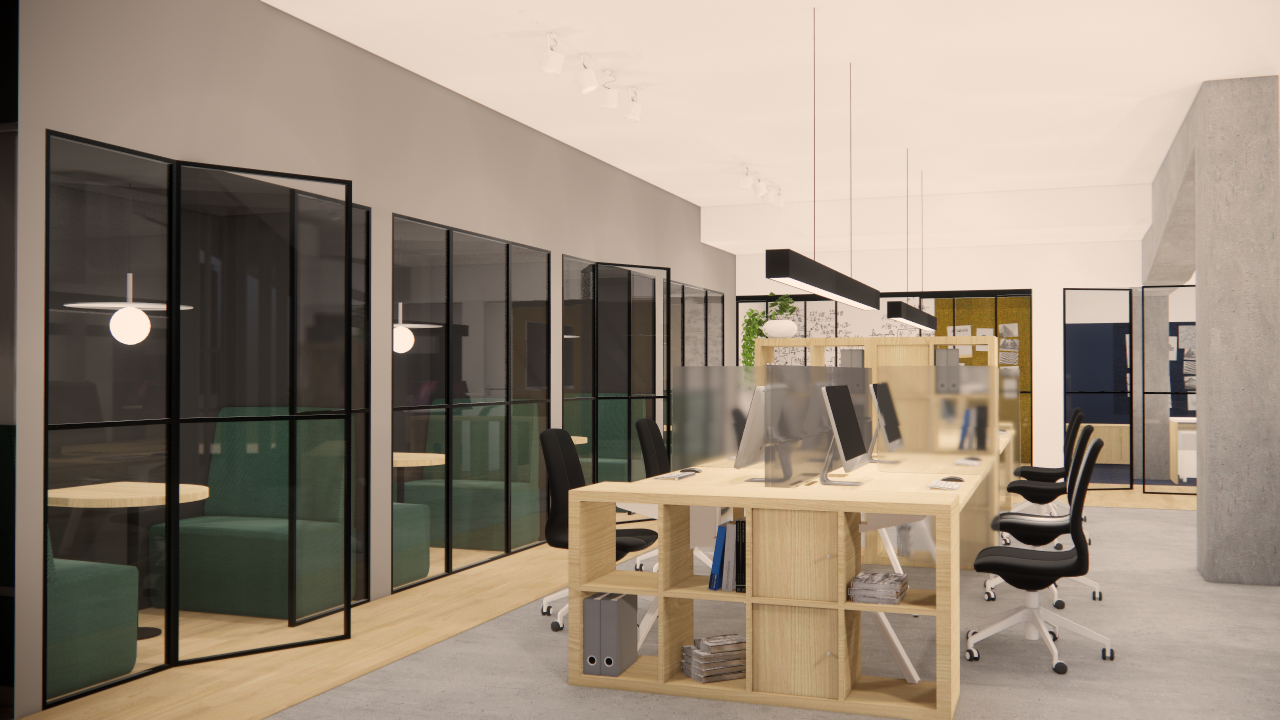The post-covid workplace trends | Part 1
Working in corporate environments and businesses dynamics have greatly been touched and restructured because of the COVID-19 pandemic. As teleworking was slowly becoming more popular, the 2020 global lockdown forced companies to make the switch faster than expected, disrupting the well-established office lay-out codes.
For some, it’s been more than a year of working remotely from home and wheter it will become an integral part of the new office life or if a return to what was normal is possible is yet to be determined. The trend though seems to be pointing towards a hybrid system.
Without knowing the answer to that question, Annie-Claude Gilbert, Partner and Interior Designer at LemayMichaud, tried to analyze the new stakes and emerging post-covid workplace trends.

HOW THINGS CHANGED FOR OFFICE SPACES?
In the past, an office space was set up according to your particular occupation as for the workspace, it was closely linked and orchestrated around its functions, i.e. the nature of the task, efficiency but also ergonomics. This way of designing the place was a pretty rigid. In the last years, open spaces are more popular and common in interior design: benefit team work, easier to maintain, they also provide better ventilation and flexibility… If we were now used to this type of space, COVID-19 has caused a profound remodelling of interior design amongst open area offices, forcing architects and designers to rethink how employees circulate and determine specific circuits. New office spaces must now feel ‘homey’, with looks that feel more residential, personalized and customizable, friendly and collaborative, inspiring and living.
In the foreseeable future, corporate lay-outs will have to be able to adapt quickly to either less or more desks, to the possibility of their employee working alternately from home and from the office and to the basic need for socialization common areas. These major points are introducing a new way of doing things. Everywhere, employers, architects and designers, are now everywhere focusing on analysing the situation in order to think and design the changes that will stay for good.
WHAT STAKES DO YOU SEE IN THE FUTURE FOR WORK ENVIRONMENTS?
Who before the pandemic has never said ′I’d love to work from home!′ ? After a year punctuated by virtual meetings at home and brief returns to the office for some, it appears very clearly that what will drive employees back to office is the desire for human contacts, their need for socialization or to be focused. On one hand, socializing and collaborating are fundamental human needs, and this is what many managers have noticed during the pandemic. Their teams feel the need to connect, collaborate, brainstorm or even celebrate together. Being aware of these stakes clearly indicates the importance of creating office spaces that take these specific objectives into consideration in the future, by giving users more flexible and also informal meeting spaces. On the other hand, there are also parents or members of large families, who in the past few months have found moments of loneliness, silence and focus quite harder to find. These people will come back to work to find their ‘bubble’ in which they will find calmness and the possibility of being more focused. This will necessarily translate into more ergonomic, sunnier environments tailored to everyone’s personal needs and with above all with impeccable acoustics developed specifically for the spaces. The idea is to design a lay-out that will respect both the employee’s personal bubble and their need to collaborate. OpenSpaces will be rethinked to keep workers safe by keeping the distancing. Offices will be redesigned to optimize the need for calm and privacy. In return, collaborative spaces will be omnipresent and will offer a myriad of possibilities and arrangements (lounge, conference, viewing lounges, private booths and phonebooth, etc).

Maintaining team collaboration will require arranging the space differently: more small conference rooms, fewer large ones. Photo: Rendering of Kabane, agence de marques, Septembre Éditeur and iXmédia by LemayMichaud.


